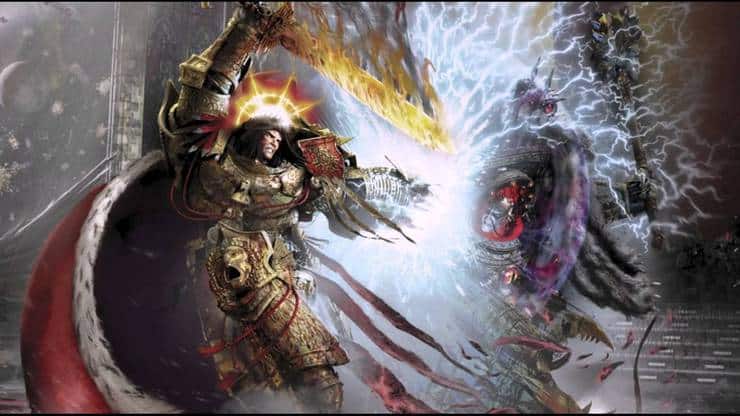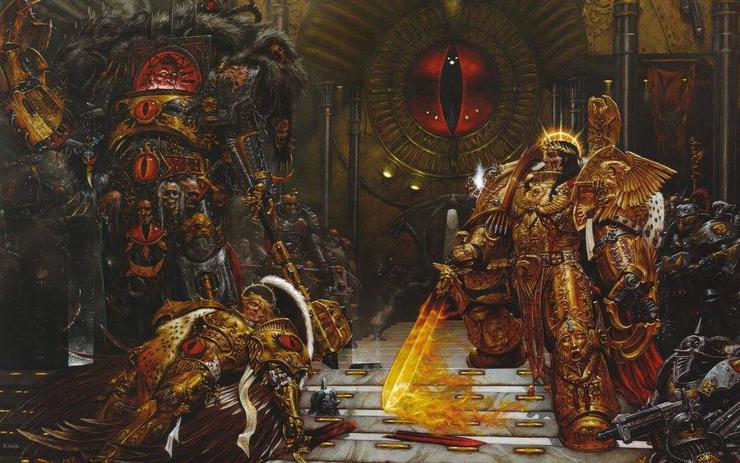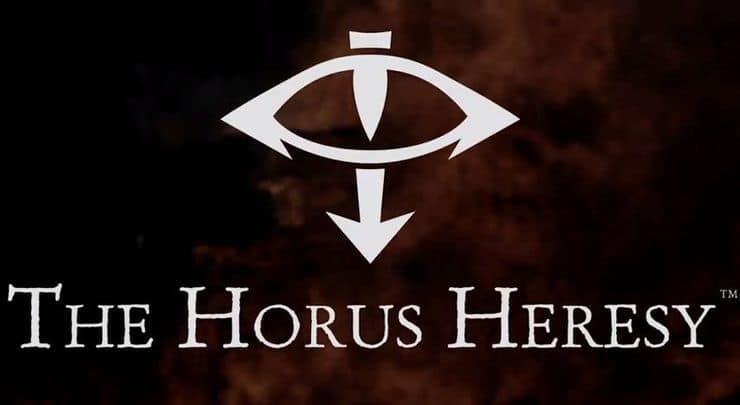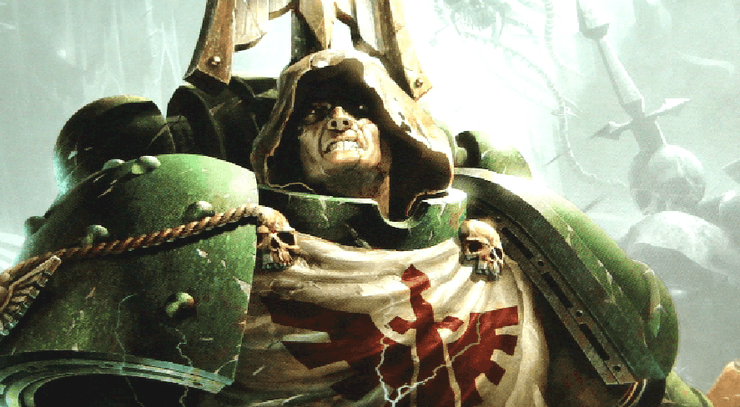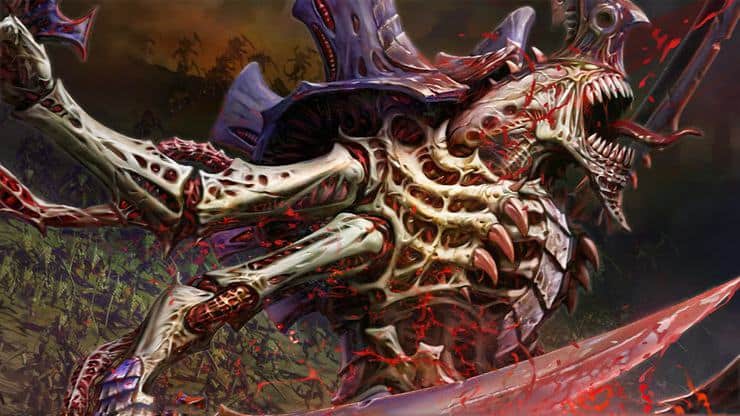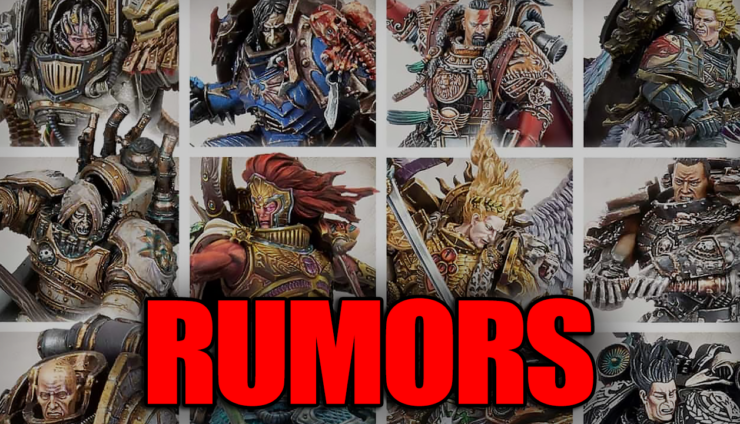Allegiance can be tricky. I can hardly pledge allegiance to my lunch, much less to a war that will span over 10 thousand years! Don’t go hungry with this guide!
Introduction
The Horus Heresy, or 30k as its commonly known, is the genesis story of the the 41st millennium. It charts the schism of brotherhood in the Legiones Astartes and the Age of Darkness that followed. The young Imperium of man was lost in a maelstrom of civil war that ripped away the gains of the Great Crusade.
This war, more than pitched Astartes on Astartes in battle, created a great vacuum of power that involved all human dominated worlds. This included the basic militia of worlds that had been raised to fight for their defense. The elite human armies of the Solar Auxilia and the machinations of the Taghmata Omnissiah were inextricably linked to the war.
Each of these factions beared their allegiance, sooner or later, for either the Emperor of Mankind or the Warmaster Horus.
This article will be the first in a series that aims to make picking an army to play in 30k easier for you. I hope, thanks to these articles, you’ll be able to pick an army you love to play. The articles will highlight the various play styles and the ways in which you can customize your army; amongst other factors. Today, we start with one choice, it’s time to decide, YOUR ALLEGIANCE!
Traitor vs Loyalist
In 40k there are many factions. In the Age of Darkness there are only two; with one exception I will cover below. These choices define whether you follow the Emperor or the Warmaster. Whilst this might seem trivial, it’s a fantastic place to start with your army as your choice of allegiance affects what special characters, allies, and rites of war you can take to battle. This first choice strongly defines the routes you can take with your army lists.
It’s important to note that you can always choose to be a loyalist faction of a Traitor legion such as the Death Guard, or conversely you can choose to be a traitor faction of a loyalist legion like the Space Wolves; there is room enough in the fluff and the rules for you to do precisely this.
Below, I will go through each of the sub factions of Legiones Astartes, Solar Auxilia, Imperial Militia, Taghmata Omnissiah and give you an idea of the broader consequences of choosing your fealty will have.
Legiones Astartes
Choosing traitor or loyalist doesn’t actually define the legions you can choose from in 30k. The narrative of 30k with the purging of the loyalist sections of traitor legions at Istvann III with plenty of small surviving factions allows you to play loyalist sections of the traitor legions and conversely you can also play traitor sections of the loyalist legions.
However whether you are a traitor or not will place restrictions on special characters you can choose (so no loyalist Fulgrim for example) and often overlooked it also dictates which rites of war you can choose. For those who don’t know Rites of War are like different detachments you can take that can move units around the force org slots and gives special rules to that section).
An example of this restriction is the 3rd Company Rite of War with the Emperor’s Children. This allows you to take Kakophonie (noise marines) as troop choices, but as the Kakophonie are a direct section of the Emperor’s Children that fell to excess this means you cannot select this Rite of War if you are a loyalist.
The one exception to this dual faction setting (as alluded to earlier) is the Blackshields. These are space marines that have denounced both factions and fight for their own cause and have banded together to form roving war parties. These may fight for honour or for glory, for hate or spite and myriad other reasons that you can develop yourself. These have limitations on their choices from Legiones Astartes units due to their lack of operational capacity, but they have some very cool rules and unique units that make up for these restrictions.
Taghmata Omnissiah
Its is a lot simpler for the mechanicum as choosing between Traitor and Loyalist just restricts your choice of special characters. Much like the special characters in the Legiones Astartes these special characters can drastically change your army composition with different units becoming more or less available. They will also force your hand in terms of allies remember if you are a traitor or loyalist faction because of a character you have.
Solar Auxilia
The Solar Auxilia have a very small army list compared to the above armies and they in fact only have one special character who is loyalist. So with the Auxilia your main concern is who you want as allies if any. Also worth remembering that certain armies will have benefits against loyalist or traitor factions so you do have to declare the faction of your army.
 Imperial Militia
Imperial Militia
The Imperial Militia can select 2 Provenances from a list of 10-12 that drastically alter the rules of units that list Provenance in their special rules. This includes +1 to armour saves or making units +1 leadership for example. What faction you choose will exclude some of these provenances from being taken which will then exclude certain unit choices from being taken as well.
For example you can take a Cultist Provenance in traitor only factions which then gives you access to chaos spawn and rogue psykers. These are traitor specific and loyalist armies can’t take them. On the flip side taking traitor provenances often means certain other provenances are now none selectable, so you do need to think through your faction.
Conclude
I hope that has helped clear in your mind whether you want to be traitor or loyalist as each faction comes with its own restrictions that can effect your choice of special characters, army detachment types and even specific units. So if you are very set on running lots of Kakophonie then you invariably want to be a traitor which will exclude a couple of special characters from the Emperor’s Children list.
Next time I will go over how you want your army to play and discuss the multitude of ways you can change you’re force org chart to suit that.
Peace out, Rob
